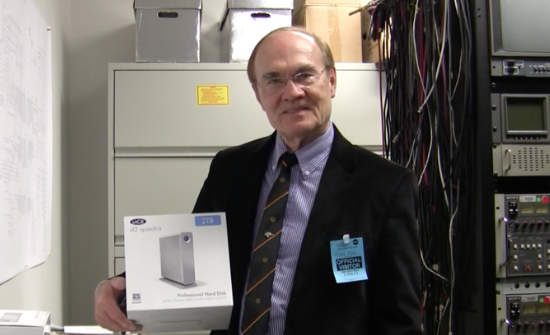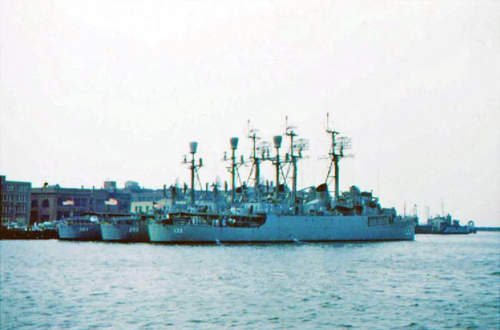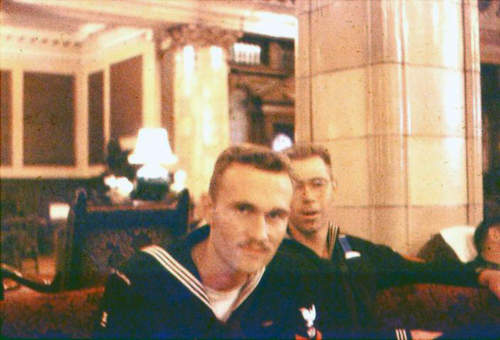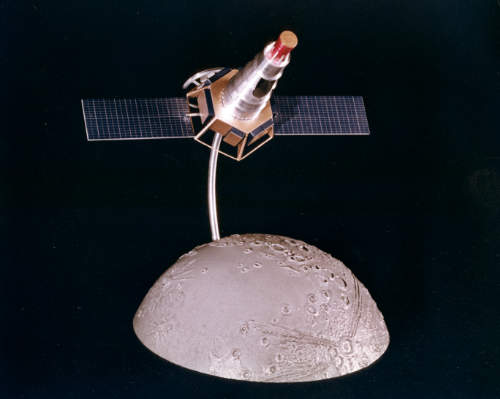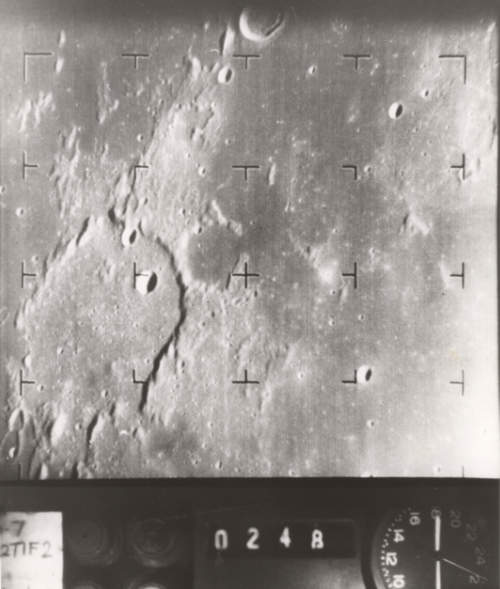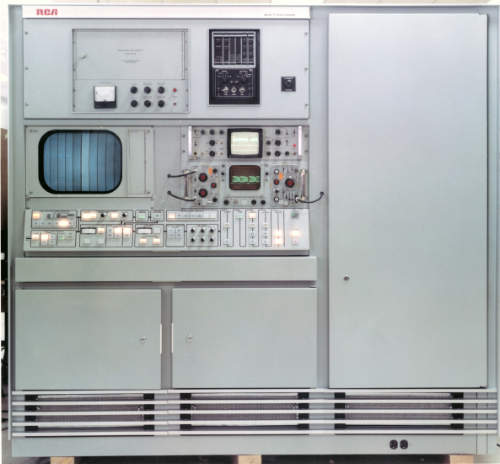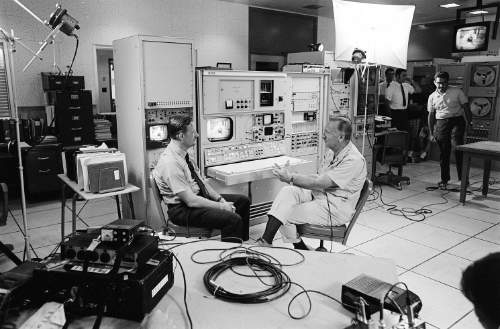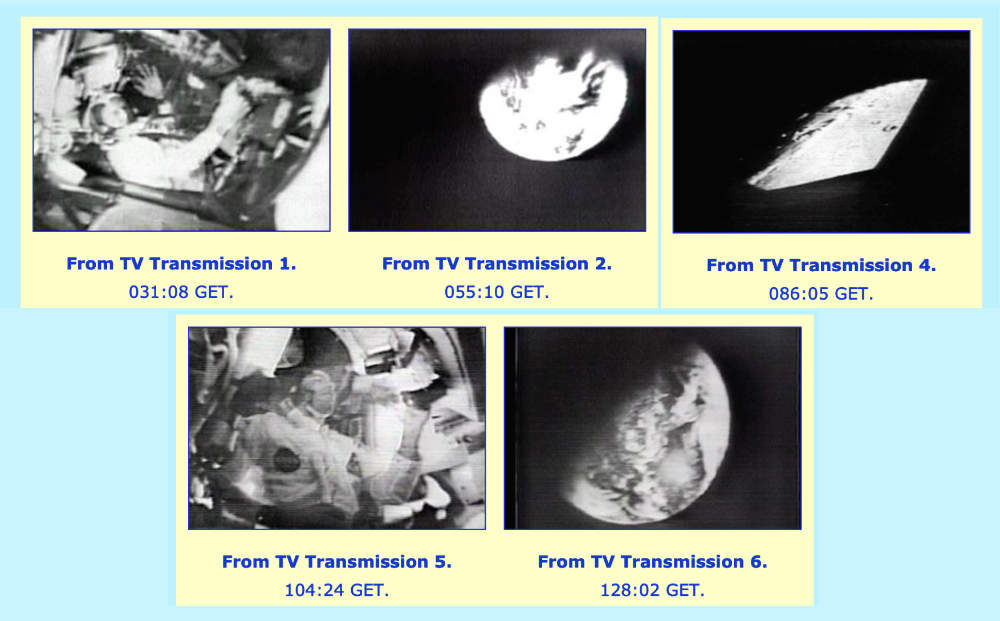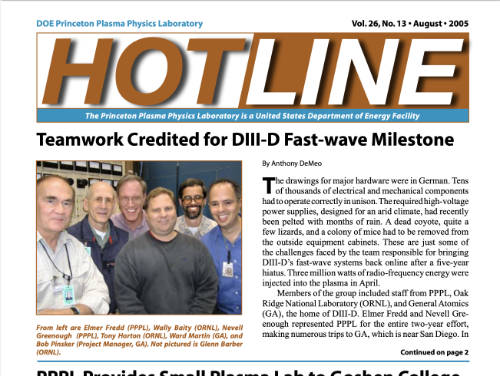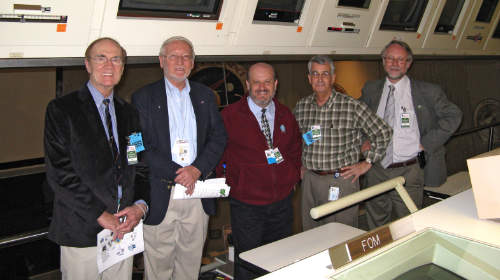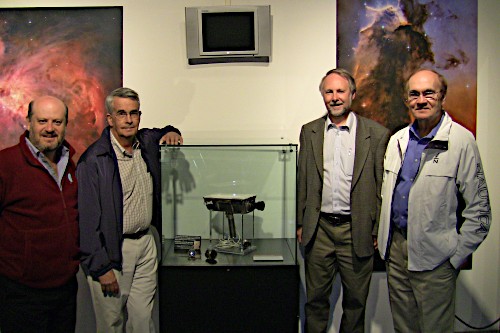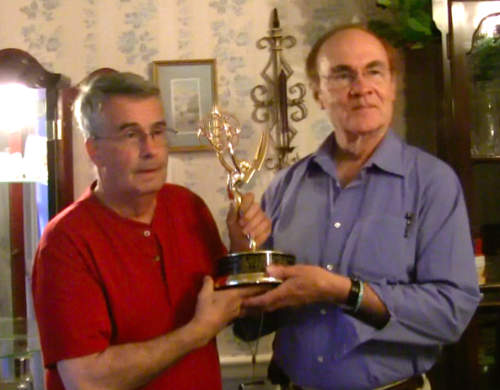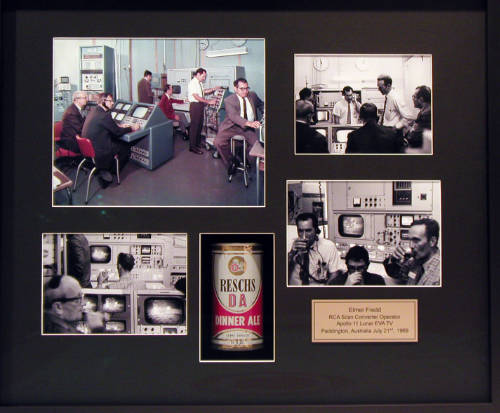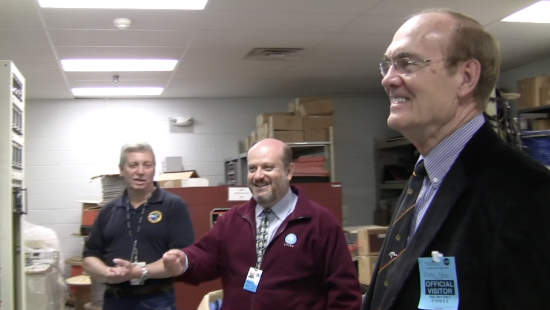Elmer Fredd – RCA Astro and Apollo Television
1937 – 2024
Elmer Fredd, holding a hard drive with restored video of the Apollo 11 Moonwalk. Goddard Space Flight Center, April 2011. Photo: Colin Mackellar. |
Elmer Fredd played a key role in allowing hundreds of millions of people to see television from the Moon.
Earlier, in the late 1950s, he had served as an Electronics Technician on the USS Pillsbury, a radar picket vessel, as part of the Contiguous Radar System protecting the East Coast of the United States from surprise air attacks. The USS Pillsbury was based out of Newport, Rhode Island.
USS Camp, USS Sellstrom and USS Pillsbury at Goat Island, RI. |
Elmer in London, via the USS Pillsbury page. |
It was after this Navy service that Elmer turned his electronic expertise to space when he joined RCA Astro Electronics Division.
(Elmer had always been interested in how television worked – his father was a TV repairman.)
Ranger
Launched between 1961 and 1966, NASA’s unmanned Ranger probes were designed to beam back to Earth high resolution television images of the Moon as an they neared, and then smashed into, the lunar surface. This would be crucial to help understand the nature of the surface before a manned landing could be attempted.
RCA was tasked with providing the television cameras and associated subsystems on the spacecraft.
A Ranger model – RCA Astro – Electronics Division, photo 64 - 8 13C, courtesy Hans Schneider. |
The work was done by RCA Astro in New Jersey, where Elmer served as a design engineer – one of eight engineers in the RCA Astro TV Camera Group. He recalls the Camera Group was “a closeknit group of widely-skilled and experienced individuals that formed a strong team”.
At RCA Astro, James Martin, Elmer Fredd (centre) and Rolfe Hetherington evaluate photos taken by a test camera. Photo from the December 1964 issue of Ebony magazine. Via Elmer Fredd. |
Elmer arrived at Astro in 1962, just as the Ranger 5 camera was being assembled and commissioned, and worked on the vidicon preamp, amplifier development and timing generator chains, as well as testing vidicon tubes for Rangers 6 to 9. (Each of these Block 3 Rangers carried six vidicon cameras.)
A 1964 RCA vidicon tube designed for the Ranger Program. Hand held for scale. With special thanks to Elmer Fredd. Photo: Colin Mackellar. |
Ranger vidicon tube’s faceplate. Elmer Fredd wrote, “This vidicon tube was made for the ‘partial-scan’ cameras. The reticles are opaque gold plating to accurately evaluate the camera’s image center. The gold bar served as the vidicon’s dark-current reference for the camera's video channel. It was subtracted from the image signal and served as black-level. The vidicon is a technical wonder. After exposure, the tube’s faceplate (target) stored the image until the tube’s beam and video amp could convert the electronic charges on the beam-side of the target into a video signal. That target image was erased to back to black by quickly scanning it with multiple sweeps of a higher (slightly de-focused) electron beam, before it was time to take the next Lunar exposure.” With special thanks to Elmer Fredd. Photo: Colin Mackellar. More photos on the Ranger Program page. |
A range of problems had plagued the first six Ranger spacecraft, but in July 1964, Ranger 7 was completely successful and returned more than 4,000 high resolution images. Rangers 8 and 9 were also a success, and the quality of the images improved as Elmer and his team, under the leadership of RCA TV pioneer Otto H. Schade, Sr. (1903 – 1981) tweaked the design.
This Ranger 7 television image of the crater Guericke and Mare Nubium was preserved by Elmer Fredd. |
Apollo
Among the programs with which Elmer was involved, the RCA Scan Converter for Apollo slow scan television is best known.
In 1963, NASA’s contract for a lunar television camera was won by Westinghouse, arch rivals of RCA. The contract called for a low-bandwidth camera operating at 10 frames per second with only 320 lines vertical resolution. This meant that scan conversion on Earth would be needed to display the picture on a domestic television receiver. RCA won the contract to build scan converters for NASA. These were sophisticated optical and electronic converters.
They were also expensive, costing around $350,000 each in 1968 dollars.
One of the RCA Scan Converters prior to installation at one of the stations. Photo: Dick Nafzger. |
In March 2010, Elmer wrote about his work on the scan converter:
“At RCA, I was a member of the team that designed, fabricated, assembled, tested and ultimately operated (and repaired) this equipment.
I was at Goldstone for the Apollo 8 mission and operated the Scan Converter during each A8 video downlink.
In addition to getting the Converter up-and-running, I also helped the GDS station master find a problem in his equipment’s feed to the new Motorola demodulator. During the first A8 downlink, we saw excessive noise in the video’s white levels. The immediate suspect was the newly reassembled Scan Converter. The problem though, was a defective (lossy) cable under the station floor. It did not provide enough signal level to the new demodulator.
We were up-and-ready for the next and all subsequent A8 videos.” [Five of the six Apollo 8 broadcasts were released to the world via Goldstone.]
The RCA Scan Converter at Goldstone is seen here between CBS News’ Walter Cronkite (right) and Mars Assistant Director Bill Gill on 4th July 1969.
Photo: Bill Wood.
When the world saw the Apollo 8 crew read from Genesis as part of their Christmas Eve message, they saw it courtesy of ‘Elmer’s’ scan converter at Goldstone.
Five of the six Apollo 8 broadasts were released to the world via Goldstone. Click the image for the Apollo 8 video page. |
From Apollo 8’s fourth telecast – this one during Rev 9. |
In 2010, Elmer wrote, “it occurred to me that I might still have the badge I wore when I operated the RCA Scan Converter at Goldstone during the Apollo 8 video broadcasts. I had carried the badge around in the various briefcases I have owned over the last 40 years.” |
With the prospect of Apollo 11 sending live television of man’s first steps on the lunar surface, Elmer was tasked by the RCA Apollo TV project manager to travel to Sydney. Here he would work with the NASA team to be stationed at “Sydney Video” in the OTC’s international gateway exchange. Sydney Video would have a scan converter dedicated to the slow scan TV picture coming from Parkes, while Honeysuckle Creek would have another scan converter for the TV received there.
A few weeks before Apollo 11 launched, someone in the OTC building mis-wired the power supply to the scan converter, causing extensive damage. As much as 40% of the components needed to be replaced, and everything needed to be tested. The NASA team – consisting mainly of Ted Knotts and Dick Holl – began a marathon effort the get the converter running again, even though exact replacement parts were often not available. There was considerable relief when Elmer arrived with his detailed knowledge and expertise.
This NASA photo, G-70-1459, shows the Sydney Video team in preparation, in the days leading up to Monday July 21. In the foreground, from left: Charlie Goodman, Vern McGlynn, Ray Lauver. Facing camera, from left: Dick Holl, Ted Knotts, Elmer Fredd. Photo preserved by Dick Nafzger. Scan: Colin Mackellar. |
Following on from the account of his time at Goldstone for Apollo 8 in December 1968, Elmer continues:
“A few months later, I was in Sydney for the Apollo 11 mission, and operated the Sydney Video Scan Converter.
Prior to the mission, I helped finish up the Scan Converter repairs caused by the AC power mis-wire and other failures we had just before the landing and moonwalk(s). The vertical-scan reversing switch had already been installed by Dick Holl and was positioned correctly.
The Scan Converter’s control loops and logic were tweaked shortly before the signal was expected. The converter then locked up (synchronized) and properly displayed the camera’s images a few 10’s of milliseconds after the converter received its input. The converter’s good performance persisted throughout the A11 mission.”
This panorama was assembled from film (12MB mp4 file) taken very shortly before the lunar landing. Click the image for a PDF file. At left, OTC’s Wayne Ozarko speaks on the phone at the TV selector console. At right, Dick Holl and Elmer Fredd work on the MVR disc recorder which was used to increase the slow scan video’s 10 fields per second to US commerical TV’s 60 fields per second. (MVR disc recorders were introduced in 1965 and were used for action replays in coverage of sporting events.) Elmer wrote in June 2010:
Source footage courtesy of Mark Gray. Image assembled by Colin Mackellar. |
Although he would not say it, Elmer’s intimate knowledge of the scan converter enabled him to not only help the NASA team already in Sydney to repair the equipment, but also to tweak numerous settings to get the best possible picture.
Celebrations at Sydney Video after the EVA. From left: Ted Knotts, Richard Holl and Elmer Fredd celebrate in front of the Scan Converter, with Buzz Aldrin and Neil Armstrong safely back inside the Lunar Module. Inspection of the picture on the monitor shows that the PLSS dumping has not yet occurred. This photo was taken with the Polaroid camera which was used with the Fairchild slow scan monitor behind Ted. Photo preserved and scanned by Dick Holl, this copy via John Sarkissian. Image restoration Colin Mackellar. Learn more about Apollo 11 TV and What happened at Sydney Video. Also hear these audio interviews with Dick Nafzger. |
Learn more about Apollo 11 TV and What happened at Sydney Video. Also hear these audio interviews recorded with Dick Nafzger in 2010. |
While Honeysuckle Creek provided the world with its video of Neil Armstrong’s first step, the picture from Parkes was the worldwide source of the majority of the two and a half hour television broadcast.
After Apollo, Elmer returned to television when he helped design RCA’s first generation Shuttle TV cameras.
After RCA
Elmer left RCA Astro in 1978, and took a position in Texas before returning to New Jersey in 1980 to work at the Princeton Plasma Physics Lab. He wrote in 2010,
“I am a Principal Radio Frequency Engineer and lead a small RF engineering group of seven engineers and five technicians. We provide the multi-megawatt RF power used in our National Spherical Tokamak Experiment (NSTX) to do fusion energy research.”
Elmer continued at Princeton, working on fusion power, until he retired 2018.
Ed is at left in this photo on the front of PPPL’s Hotline magazine for August 2005. (Archived PDF file here.) |
In 2011, Elmer was able to visit the Goddard Space Flight Center in Greenbelt, Maryland, and TV engineer Dick Nafzger, who was responsible for receiving the Apollo television. Dick was also the team lead in the 2004–2009 search for the Apollo 11 telemetry tapes and the restoration of the existing Apollo 11 EVA TV.
Elmer Fredd, at left, outside the backup Mission Control at the Goddard Space Flight Center in 2011. In the photo, from left – Elmer Fredd, Bob Stanley (Goddard Sim team), John Sarkissian, Dick Nafzger, Colin Mackellar. |
L-R: John Sarkissian (Parkes), Dick Nafzger, Colin Mackellar, Elmer Fredd, with a production model of the Westinghouse Apollo 11 Lunar Surface Camera, at the National Electronics Museum, Linthicum, Maryland, April 2011. This is the camera Stan Lebar brought to Australia in March 2006. Prior to Apollo 11, Elmer had brief access at RCA Astro to one of the Westinghouse cameras for testing with the RCA scan converter. Another such camera was taken to Sydney and then to Honeysuckle for final testing for the scan converter close to Apollo 11’s launch. Elmer and Ted Knotts visited Honeysuckle from Sydney and found the Honeysuckle scan converter to be fully set up and operating well.
|
In August 2009, NASA was awarded the Philo T. Farnsworth Primetime Emmy Award for its live broadcast of the Apollo 11 EVA. Here, two key members of the team who brought that broadcast to the world – Dick and Elmer – pose with the Emmy. (Philo T. Farnsworth invented the first all-electronic television system. During the Apollo 11 telecast, he remarked to his wife that it had made his work worthwhile. See the Emmy presentation in this 20MB mp4 file.) Frame from a rather noisy video by Colin Mackellar. |
In the photo at the top of this page, Elmer holds a drive containing a copy of the restored TV which was to be sent to the archives in Australia.
A few years before his retirement from the Princeton Plasma Physics Lab, Hans Schneider, a colleague at PPPL who had also worked at RCA Astro, presented Elmer with this diorama.
Hans was able to source a can of Reschs Dinner Ale like the one Elmer is holding in the photo below. |
Sydney Video after the EVA had ended, but before Armstrong and Aldrin dumped their backpacks down the ladder. At centre, Elmer Fredd is celebrating with a can of beer – Reschs DA – at the scan converter. Photo: Thanks to Dick Nafzger. Scan: Bill Wood. |
In a 2010, Elmer wrote of his work on the Ranger probes,
“I certainly had a love affair those days with the Moon each night it was visible, on the nights I worked late.
I still look up some nights and think ‘There’s hardware laying up there I’ve touched, tested and tweaked and circuitry I’ve designed’.”
Elmer with Joe Damiano of Goddard TV (left) and John Sarkissian from Parkes, at the Goddard Space Flight Center in 2011. Photo: Colin Mackellar |
In loving memory of Elmer Fredd, 1937 – May 2024.
